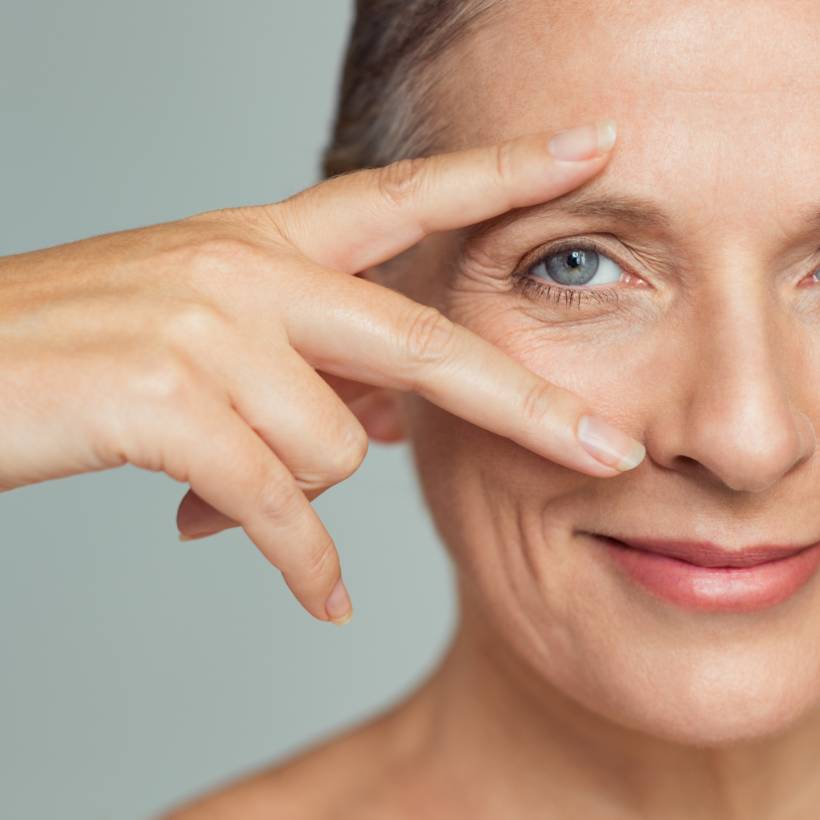Eyelid Surgery
Facial Enhancement Procedure
One’s eyes convey so many meanings and bring intrigue to the face. They are the mirrors to the soul, and they reflect how one feels emotionally and physically. As one ages, the appearance of the eyes may be altered.
Cosmetic surgery can transform eyelids that have excessive, droopy skin, which may make you seem sad or angry. It can bring a more youthful look that has been lessened by puffiness or bags. Eyelid surgery creates more youthfulness and energy to your appearance by eliminating excess skin, tissue and fat which causes puffiness and bags in the upper and lower eyelids.
A blepharoplasty is a surgical procedure to improve the appearance of the upper eyelids, lower eyelids, or both. Eyelid surgery can help eliminate sagging, loose skin so the natural contour of the upper eyelid is exposed and not hidden. An upper blepharoplasty can correct an array of issues. Sometimes one’s vision can be impaired by excess skin that hangs from the upper eyelid and fatty deposits create puffiness in the upper lids. Both issues are corrected when one undergoes an upper blepharoplasty. A lower blepharoplasty can correct “bags” under the eyes, the white that shows below the iris, causes by the droopiness in the lower lids, and fine or deep wrinkles due to the excess skin of the lower lid.
 *Model
*Model
What Causes Eye Issues
Heredity and natural aging cause these conditions of the eyes. For some, genetic factors may contribute to these issues as early as the 20s and 30s. Noticeable improvement in the appearance of the eyes, through eye surgery, is achieved by the removal of excess skin, the elimination of bags and the restoration of firmness to the area surrounding the eye. This creates a more restful and alertness in your eyes.
Refining Natural Beauty
View Patient Before and After Photos
Dr. Jason Hess is committed to the highest standards of excellence in patient care.
View Blepharoplasty GalleryDuring Surgery
To correct droopiness of the upper eyelid, an incision is made within the natural crease of the upper eyelid. This causes repositioning of fat deposits, tightening of muscles and tissue, and/or removal of excess skin thus creating a firmer upper eyelid contour.
A transconjunctival incision can correct lower eyelid conditions and is hidden inside the lower eyelid. Fat is redistributed or removed, and sagging muscles are tightened through this incision. An alternative technique to this approach is when an incision is made just below the lower lash line, which will correct lower eyelid conditions by the removal of excess skin.
Incision lines are concealed within the natural structures of the eyelid region and results appear gradually as swelling and bruising subside. A smoother, more defined eyelid and surrounding area creates an alert and rejuvenated appearance.
Postoperative
After surgery, lubricating ointment and cold compresses may be applied. Sometimes, your eyes may be loosely covered with gauze. Initially there may be some swelling, bruising, irritation or dry eye and discomfort. This can be controlled with medication, cold compresses and ointment. There may also be irritation at the incision sites, which are all common conditions. One will need to elevate the head at all times until initial swelling has subsided. You must wear sunglasses to protect your eyes from bright light, sun and wind. It is important that you follow all of the plastic surgeon’s instructions to insure the success of your surgery’s outcome.
